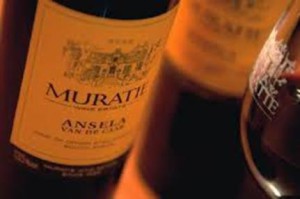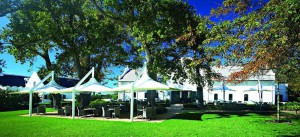Inspirational women of the Cape winelands
In South Africa we celebrate Women’s Day on 9 August each year in homage to the women of our nation who fought tirelessly against the tyranny of the Apartheid government.
The Cape winelands have a long lineage of inspirational women. One of the most fascinating tales is that of Ansela van de Caab (a surname given to slaves which means ‘from the Cape’), who started out her life being born to a slave in the Castle and ended up having a secret love affair with Laurens Campher, a dashing German soldier in the service of the Dutch East India Company. He was granted a farm by Governor Wilhelm Adriaan van der Stel in 1685 and subsequently moved to Muratie , his piece of land at the foot of the Simonsberg mountains, some 40km from Cape Town. He used to walk, an arduous three-day journey, to visit Ansela in the Cape slave quarters. In 1699, Ansela was released after being baptised in the Castle. Laurens fetched her and their three children – Cornelius, Jacoba and Agenetjie – and took them to their new home, Muratie, where she lived the rest of her life in freedom.

The current owners of this historic estate in Stellenbosch, the Melck family, honoured the role she played in the history of their farm by naming their flagship Bordeaux-style red blend after her.
Then there’s another one of my favourite winelands stories, that of Catharina Ustings, the unconventional first owner of Steenberg (Mountain of Stones), a widow from Germany who stowed away on a ship and landed at the Cape dressed as a man! A feisty pioneer, she outlived four of her five husbands. Legend has it that she hunted on horseback and shot the lion that took her second husband, Hans Ras, whom she married within two months of her arrival. Her third husband was killed by marauding tribesmen and her fourth was trampled underfoot by elephant! After she took a fifth husband, Matthys Michelse, she was granted permissions to lease the farm they were living on with her five children, which was formerly named Swaaneweide (The Feeding Place of Swans) in 1682. Governor Simon van der Stel later granted her request for the 25-morgen property in what is now the ward of Constantia, the cradle of winemaking in South Africa, bequeathing it to her as a gift. Catharina later approached the governor for a legal title deed for her land and took ownership in 1688, becoming the first woman to own property in the Cape.

Catharina’s, Steenberg’s fine dining restaurant, is named after her.
And don’t forget to raise a glass of the Cape’s finest in tribute to the matriarchs of the winelands who have played an integral role in the success of their family run wine farms in more recent times – there are at least four who immediately spring to mind.
Warwick’s First Lady range of wines was named after matriarch Norma Ratcliffe, who is often referred to as the 'first lady' of South African wine, as she was one of the first women in the country to make wine in this traditionally male-dominated arena. Canadian-born Norma has played a pivotal role in the success of this family-run wine estate on the outskirts of Stellenbosch. She was also the first woman to become a member of the prestigious Cape Winemakers Guild and the only woman to have served as its chairperson to date. It’s been a year of milestones for Warwick. The late Stan Ratcliffe purchased the farm 50 years ago in 1964 and their first wine, the Warwick Cabernet Sauvignon, called La Femme Bleu (The Blue Lady), was released 30 years ago in 1984. Although Norma has handed over the reins – her son Mike is now Warwick’s MD – she remains very much involved in the estate and acts as Warwick’s own ‘style director’, advising the winemaking team.
Vera Sperling of nearby Delheim was the creative driving force behind her husband, legendary winemaker Michael ‘Spatz’ Sperling, and played a significant role in making Delheim the much-loved family winery it is today. Spatz set sale on the Winchester Castle from Germany to South Africa to work on his Aunt Deli and her husband Hans Hoheisens’s farm on the slopes of the Simonsberg in 1951. The farm, then called De Drie Sprong, was later renamed Delheim (Deli’s Home). In 1975, Spatz bought a second farm, as he needed land suitable for growing red-wine varieties. These high-quality low-yielding Vera Cruz (Vera’s Cross) vineyards are named in honour of her (it’s been wryly suggested that the name reflects the cross and suffering she has had to bear since marrying the inimitable Spatz in 1965). Their son Victor and daughter Nora Sperling Thiel are now the hands-on management team.
Artist Jayne Beaumont of Beaumont Wines and her late husband Raoul Beaumont bought historic Compagnes Drift Farm in Bot River in the 1970s. They started making their own artisanal range of wines in the original wine cellar with its antique basket presses and open cement kuipe (fermenters), the oldest in the region, in 1994. The wines were initially made by Jayne, then later by Niels Verburg, who now has his own nearby wine farm and label, Luddite. Oldest son Sebastian, who returned to the farm in 1999 after graduating in oenology and viticulture at Elsenburg, is now at the helm. Honouring another inspirational matriarch in the Beaumont family is the acclaimed Hope Marguerite Chenin Blanc, which is dedicated to Raoul’s mother.
Lesca de Wet, wife of highly regarded cellarmaster Danie de Wet of De Wetshof, is a force to be reckoned with when it comes to sales and marketing. Her considerable contribution has seen this Robertson estate win the President’s Export Achievement Award an impressive five times! The future seems assured as their sons Johann and Peter, the third generation of De Wets on the family farm, have joined them in their wine business as marketer and winemaker respectively.
These are but a few of the many inspirational women across the winelands who paved the way for women in the wine industry today and are deserving of a Women’s Day toast. Cheers!
– Lindsaye Mc Gregor